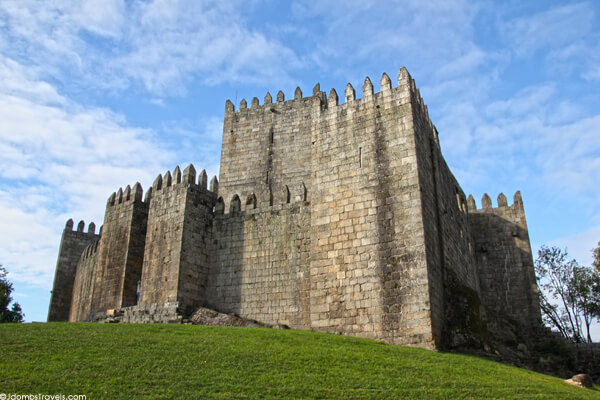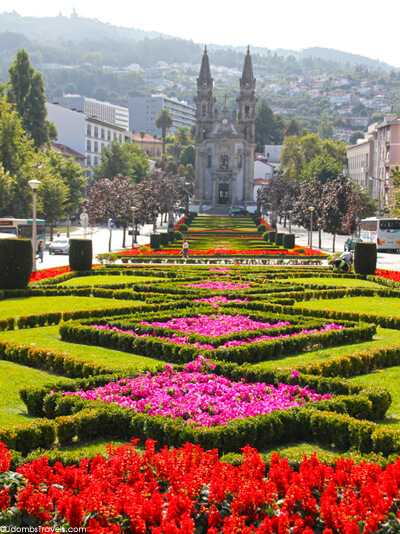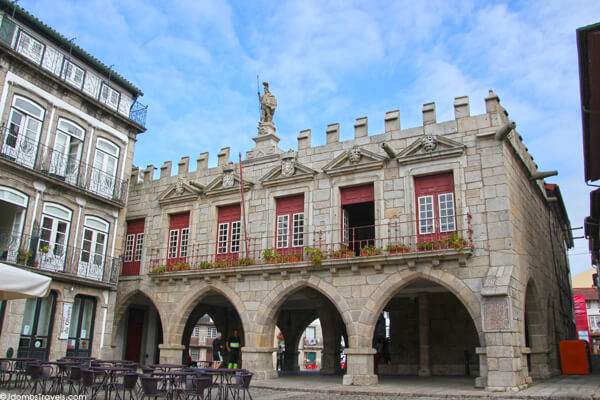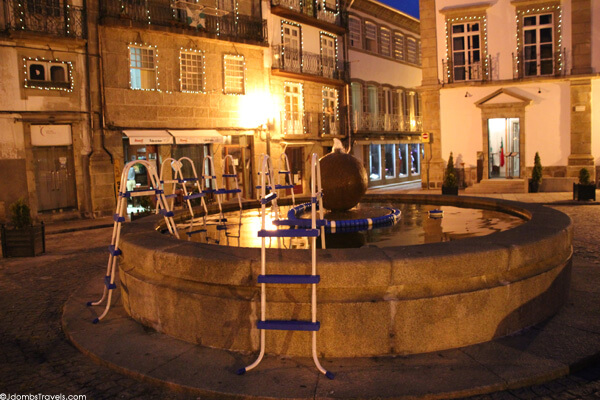Guimarães was my favorite city I visited on my tour of northern Portugal. Perhaps it was because this is where I spent the most amount of time, though I really only began to scratch the surface. Unfortunately, our bus broke down en-route from Pinhao in the Douro Valley to Guimarães. The time we were stranded on the side of the freeway took away from more time we would have had to explore Guimarães. But I still got a taste for the traditional sights on a walking tour of Guimarães, which was also the 2012 European Capital of Culture at the time of my visit.



Though I didn’t have time to go inside the castle on my visit, the day was one of those perfect, sunny days with puffy white clouds perfectly framing the imposing castle on the hill.



Know Before You Go
- Church of N. Sra. da Oliveira is open 8:30am – 12pm and 3:30pm – 7:30pm. Free entry.
- Guimarães Castle is open daily 10am – 6pm. Free entry.
- Church of Santa Gualter is open Monday through Saturday 7:30am – 12pm and 3pm – 5pm and on Sunday 7:30am – 12pm. Free entry.
Thank to you Turismo de Portugal for hosting me. As always, all opinions are my own.



Leave a Reply